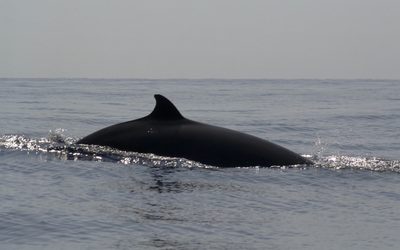A lawsuit in Ontario, an EIS in Wisconsin, and a gauntlet thrown down at an industry confab in England are the latest fronts in a global debate over the noise impacts of wind farms sited close to residences. Most dramatic was the opening plenary at the British Wind Energy Association (BWEA) annual conference, where John Prescott, a key player in crafting the Kyoto Protocols, attacked NIMBY opponents and local councils for dramatically slowing the build-out of wind farms in Britain, culminating with the rallying cry, “They’ve had it their way for far too long. So let me tell them loud and clear – it’s not your back yard any more, it’s ours.” Prescott bemoaned the fact that 75% of wind farm applications are being denied, putting the blame as much on local authorities as on vocal opponents; he called for mandates compelling localities to designate some areas as suitable for wind development as a way to break the logjam. Local authorities shot back that federal renewable energy goals can be met in other ways, and that land protection in local areas is warranted. Prescott’s attack was cast in class terms, suggesting “squires” were fighting to save their “chocolate box views,” though in many areas it is noise impacts, rather than changing views, that drive the opposition. In those areas, the issue is not whether to build wind farms, but rather how much buffer to require around homes. An EIS for the Glacier Hills Wind Park, released in Wisconsin this month, acknowledges that noise is in fact an issue for some wind farm neighbors: “The studies done to date…support the concern that some people do react negatively to wind turbine noise, primarily through annoyance and sleep disturbance. It is widely accepted that disruption of sleep can lead to other physiological and psychological problems…Although specific sound levels or distances from turbines cannot be directly correlated with these disturbance or annoyance problems, project design and siting should take potential impactcs of turbine noise into account.” In Ontario, a wind farm plan has been challenged in court by a resident who says that five turbines within 900m (a bit over a half mile) is too many, too close. “As a father, as a husband, I became very concerned about the welfare of my family,” he told CBC News. “We’re very worried about the possibilities of having industrial wind turbines located so close to our home that it will be harmful.” He wants construction stopped until studies “rule out concerns” about impacts on health, an end-point that is surely not within sight, if even possible within the context of the scientific method. Dr. Robert McMurtry, former dean of medicine at the University of Western Ontario, who appeared at a media conference yesterday launching the court action, said there are now more than 100 people in Ontario who report suffering health problems due to wind turbine noise. “There’s no authoritative guidelines for the siting of wind turbines because there’s no good evidence as to when they will be safe or not,” McMurtry said, “This is not an acceptable state of affairs when we’re planning to plunge ahead on such a large scale, a tenfold increase in Ontario.”
The debate over wind farm siting is becoming exceedingly tangled, with visual, noise, and health impacts all on the table, and too often blurred by both proponents decrying NIMBYism and opponents with varying degrees of clarity about their fears and concerns. Prescott makes a potentially valid point when he suggests that in this age of climate crisis, resistance to visual impacts should give way to the greater public good, as it has with cell phone towers and power lines. Yet the noise impacts are real, and increasingly well-documented within a half mile to a mile—see this fascinating summary of the disconnect between 1.5-2km (a mile-plus) setback guidelines suggested by researchers and health officials responding to noise issues and the much closer setbacks (1000 feet to 550m/1800 feet) actually being implemented by local, state or provincial, and national standards. When concerns about health effects extend beyond just sleep disruption from audible noise, to include effects of inaudible, but still physiologically significant, low frequency noise, things get more nebulous and difficult to either quantify or protect against, since susceptibility to LF noise is more variable from person to person, and LF noise levels are much harder to predict in the landscape.
AEI will soon be focusing more intently on the slew of reports and studies that have come out in recent months, with a goal of organizing the mass of information into something useful for planners, citizens, and those in industry who want to work with residents more constructively.



